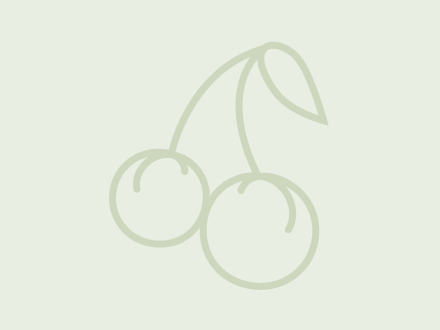An attractive, highly disease-resistant apple, ideal for organic growers.
Regina™ York 57/201cv. Cherry on Mahaleb (Spring 2024)

A highly flavored, crack-resistant sweet cherry. Also known as York 57/201.
A vigorous and upright tree with good canker resistance, Regina™ is also cold hardy and crack resistant. Regina™ is a late-blooming sweet cherry that is not self-fertile. It belongs to Pollination Group II, and it can be paired with any mid-late blooming cherry that is not also in Group II. Benton®, Sweetheart, Sylvia, Stella, Sam, Stark's Gold, and Attika are among the recommended pollination partners.
Ripening late-season, the fruit is large, firm, sweet, and highly flavored. It has found success with commercial growers, often replacing Bing on account of its firmness and superior flavor.
Regina™ was bred at the Jork Fruit Experiment Station in Hannover, Germany. It is a cross of Schneiders Spate Knorpelkirsche and Rube.
The Fruit
Fruit Type
Category: Cherry
Subcategory:
Crack-Resistant, Sweet, Cold-Hardy
Fruit Uses & Storage
Uses: fresh eating, canning
Storage duration: less than one month (approximate, depending on storage conditions)
Fruit Appearance
Skin color: red
Flesh color: red
Fruit Origins
Parentage: Schneiders Spate Knorpelkirsche x Rube
Origin: Hannover, Germany
Introduced in: 1998
Introduced by: Karl-Heinz Tiemann; Jork Fruit Experiment Station
The Environment
Calendar & Geography
USDA zones: 5 - 8
Chill hours: 1000
Ripening date: Jun 30 (approximate, in New York State) + 10 days after Bing
Tree Height & Spacing
glossary
Rootstock: Mahaleb Rootstock
Rootstock size class: Half-Standard (60% of Standard)
Tree spacing: See details
Good for wildlife planting? N
Diseases & Pests
glossary
Bacterial Canker of Stone Fruit: Very Resistant
Powdery Mildew: Resistant
Pollination
Pollination Factors
glossary
Bloom group: 4
Is it self-fertile? N
Is it fertile? Y
Ploidy: Diploid
Rootstock size class:
Half-Standard (60% of Standard)
Pollination Partners
Sweet cherries are not part of our search tool given various complexities. Please see our Pollenizer Search to run other queries and read how the application uses various factors. Also read more about fruit tree pollination.
Featured Products
A few things we're loving right now...
A full-flavored, freestone white peach.
One of America's oldest apples, good for storage, baking, and cider.
A widely-grown, large, yellow-fleshed nectarine.












